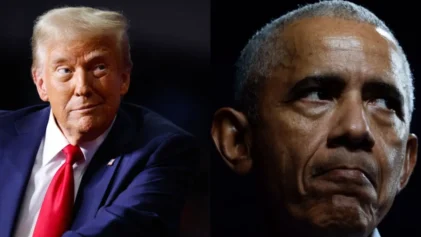While the U.S. relations with Cuba continue to be stuck in a 52-year holding pattern defined by the trade embargo, Russia is radically tightening its relationship with its old communist partner as President Vladimir Putin starts a six-day tour of Latin America by writing off 90 percent of over $30 billion in Soviet-era debt Cuba owes Russia.
With an eye on boosting trade in the region, Putin is dramatically illustrating how staid and unproductive the U.S. policy is toward it southern neighbor, by solidifying ties that will benefit both Russia and Cuba.
Putin spent a day meeting with President Raul Castro, signing a slew of agreements, and then visiting legendary leader Fidel Castro at his home outside Havana.
The Cuban state media released pictures of Putin and Castro, standing arm in arm—like a decades-old image from the Cold War.
“It’s a great sign of the generosity of Russia towards Cuba,” Raul Castro said in video released of the agreement signing with Putin.
After forgiving 90 percent of Cuba’s longtime debt to Russia, the remaining 10 percent will be spent by Havana on local investment projects selected with Russian input, according to a report in the Associated Press.
Russia is also looking to join with Cuba in searching for offshore oil, using Russian state oil companies Rosneft and Zarubezhneft. While Cuba believes there may be 20 billion barrels of oil in its waters, the U.S. Geological Survey has issued a more modest estimate of 4.6 billion barrels, according to Al Jazeera America, which reported foreign companies such as Spain’s Repsol SA, Malaysia’s Petronas Bhd and Venezuela’s PDVSA SA have drilled in Cuba without success.
Though there was some hope blooming on the island when President Obama shook Raul Castro’s hand at the funeral of Nelson Mandela, and Obama has loosened traveling restrictions for some groups of American. But fighting Congress to push for an end to the 52-year-old embargo doesn’t seem to be a high priority for the president.
Despite the entrenched positions of congressional Republicans – who show no sign of easing their position on Cuba anytime due to the power wielded by older Cubans in South Florida—a majority of the American public considers the embargo a failed policy, according to a February poll by the Atlantic Council.
The poll revealed that 56 percent of Americans would like to see the embargo dropped entirely—including 52 percent of South Florida’s Cuban-American population, the first time that population had a majority in favor of ending it.
Polls show that it is an issue of age in the Cuban-American population—68 percent of total Cuban-Americans favor re-establishment of diplomatic relations with Cuba, but just 41 percent of those 65 and up. As for the younger Cubans, age groups 18 – 29 and 30–45 support U.S. engagement with Cuba at percentages of 88 and 78 percent.
But as Russia solidifies its ties with Cuban—bringing to mind the old American fears that led to the 1962 Cuban missile crisis, a Cold War standoff between President John Kennedy and Soviet Premier Nikita Khrushchev—the U.S. remains stuck in an embargo that has failed for more than five decades to affect the institution of communism on the island.
“The embargo itself does not change, nor does the rhetoric that argues for its necessity,” author Julia Cooke wrote on Al Jazeera America. “Vocal pro-embargo congressmen refer to popular support that has, as the FIU poll proves, dissipated. Vitriol against Castro blinds them from seeing their constituents clearly. But young Cuban-Americans don’t vote in large numbers, nor do they hold the political influence of the older members of their community. This is why new organizations such as the #CubaNow advocacy group and the Roots of Hope youth organization push for engagement and provide tools with which Cuban-American youth can shift from mere symbolism into a force for change. Because until policy follows popular support, the relationship between our two countries will be defined by the power struggles of a controlling generation resistant to change, more alike on both sides of the straits of Florida than different.”


